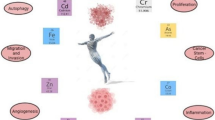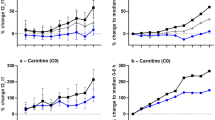Abstract
Aim
To assess the suitability of different methods for biological monitoring of internal dose to N,N-dimethylformamide (DMF) in occupational settings.
Methods
The determination of urinary metabolites of DMF, N-hydroxymethyl-N-methylformamide (HMMF), N-methylformamide (NMF) and N-acetyl-S-(N-methylcarbamoyl) cysteine (AMCC) was carried out by four selected analytical procedures. Two methods solely measured total NMF (HMMF and NMF). The other two methods measured both total NMF and AMCC in one analytical run. All four methods were tested on 34 urine samples from workers exposed to DMF.
Results
Comparison of the four methods for determination of total NMF in urine showed that results were similar for three methods, while the remaining one provided NMF levels significantly lower (by 22%) than the other methods. Thus, all but one of the tested methods for the determination of total NMF can be considered to be suitable for biological monitoring of internal dose to DMF. The two tested methods for the determination of AMCC afforded results that showed high correlation but differed significantly (by 10%).
Conclusion
The choice of the biomonitoring method depends mainly on the purpose for which the measurement is conducted. For evaluation of acute exposures or to assess safety measures in the working area, an updated version of the traditional method of Kimmerle and Eben (1975a, b) for the determination of total NMF in urine is sufficient. For risk assessment after exposure to DMF, the determination of AMCC should be carried out, since AMCC, but not total NMF, is supposed to be related to the toxicity of DMF. However, there is still a need to develop an easier, more sensitive and more selective method for the determination of AMCC in urine until AMCC can be considered for regulatory purposes in occupational settings.
Similar content being viewed by others
References
ACGIH (2004) TLVs and BEIs, threshold limit values for chemical substance and physical agents and biological exposure indices, Cincinnati
Casal-Lareo A, Perbellini L (1995) Biological monitoring of workers exposed to N,N-dimethylformamide. II. Dimethylformamide and its metabolites in urine of exposed workers. Int Arch Occup Environ Health 67:47–52
Casal-Lareo A, Perico A, Bavazzano P, Soave C, Perbellini L (1995) Biological monitoring of workers exposed to N,N-dimethylformamide. I. Methods of analysis. Int Arch Occup Environ Health 67:41–46
DFG (1997) Deutsche Forschungsgemeinschaft. In: Angerer J, Schaller KH (eds) Analysis of hazardous substances in biological materials, vol 5. Wiley, Weinheim
DFG (2004) Deutsche Forschungsgemeinschaft. List of MAK and BAT values 2004. Wiley, Weinheim
Fail PA, George JD, Grizzle TB, Heindel JJ (1998) Formamide and dimethylformamide: reproductive assessment by continuous breeding in mice. Reprod Toxicol 12:317–332
Gescher A (1993) Metabolism of N,N-dimethylformamide: key to the understanding of its toxicity. Chem Res Toxicol 6:245–251
Imbriani M, Maestri L, Marraccini P, Saretto G, Alessio A, Negri S, Ghittori S (2002) Urinary determination of N-acetyl-S-(N-methylcarbamoyl) cysteine and N-methylformamide in workers exposed to N,N-dimethylformamide. Int Arch Occup Environ Health 75:445–452
Käfferlein HU, Angerer J (1999a) Simultaneous determination of two human urinary metabolites of N,N-dimethylformamide using gas chromatography-thermionic sensitive detection with mass spectrometric confirmation. J Chromatogr B Biomed Sci Appl 734:285–298
Käfferlein HU, Angerer J (1999b) Determination of N-acetyl- S-(N-methylcarbamoyl)cysteine (AMCC) in the general population using gas chromatography-mass spectrometry. J Environ Monit 1:465–469
Käfferlein HU, Angerer J (2001) N-methylcarbamoylated valine of hemoglobin in humans after exposure to N,N-dimethylformamide: evidence for the formation of methyl isocyanate? Chem Res Toxicol 14:833–840
Käfferlein HU, Göen T, Müller J, Wrbitzky R, Angerer J (2000) Biological monitoring of workers exposed to N,N-dimethylformamide in the synthetic fibre industry. Int Arch Occup Environ Health 73:113–120
Kawai T, Yasugi T, Mizunuma K, Watanabe T, Cai SX, Huang MY, Xi LQ, Qu JB, Yao BZ, Ikeda M (1992) Occupational dimethylformamide exposure. 2. Monomethylformamide excretion in urine after occupational dimethylformamide exposure. Int Arch Occup Environ Health 63:455–460
Kennedy GL Jr (2001) Biological effects of acetamide, formamide, and their mono and dimethyl derivatives: an update. Crit Rev Toxicol 31:139–222
Kestell P, Gill MH, Threadgill MD, Gescher A, Howarth OW, Curzon EH (1986) Identification by proton NMR of N-(hydroxymethyl)-N-methylformamide as the major urinary metabolite of N,N-dimethylformamide in mice. Life Sci 38:719–724
Kimmerle G, Eben A (1975a) Metabolism studies of N,N-dimethylformamide. I. Studies in rats and dogs. Int Arch Arbeitsmed 34:109–126
Kimmerle G, Eben A (1975b) Metabolism studies of N,N-dimethylformamide. II. Studies in persons. Int Arch Arbeitsmed 34:127–136
Lauwerys RR, Kivits A, Lhoir M, Rigolet P, Houbeau D, Buchet JP, Roels HA (1980) Biological surveillance of workers exposed to dimethylformamide and the influence of skin protection on its percutaneous absorption. Int Arch Occup Environ Health 45:189–203
Mráz J (1988) Gas chromatographic method for the determination of N-acetyl-S-(N-methylcarbamoyl)cysteine, a metabolite of N,N-dimethylformamide and N-methylformamide, in human urine. J Chromatogr 431:361–368
Mráz J, Cross H, Gescher A, Threadgill MD, Flek J (1989) Differences between rodents and humans in the metabolic toxification of N,N-dimethylformamide. Toxicol Appl Pharmacol 98:507–516
Mráz J, Gescher A, Cross H, Shaw AJ, Flek J (1991) New findings in the metabolism of N,N-dimethylformamide—consequences for evaluation of occupational risk. Sci Total Environ 101:131–134
Mráz J, Nohová H (1992a) Percutaneous absorption of N,N-dimethylformamide in humans. Int Arch Occup Environ Health 64:79–83
Mráz J, Nohová H (1992b) Absorption, metabolism and elimination of N,N-dimethylformamide in humans. Int Arch Occup Environ Health 64:85–92
Mráz J, Tureček F (1987) Identification of N-acetyl-S-(N-methylcarbamoyl) cysteine, a human metabolite of N,N-dimethylformamide and N-methylformamide. J Chromatogr 414:399–404
NIOSH (2003) NIOSH manual of analytical methods. National Institute of Occupational Safety and Health, Cincinnati http://www.cdc.gov/niosh/nmam/
NIOSH (2004) Pocket guide to chemical hazards. National Institute of Occupational Safety and Health, Cincinnati http://www.cdc.gov/niosh/npg/npgdname.html
OSHA (2003) Occupational Safety and Health Administration, OSHA methods, US Department of Labor, Washington. http://www.osha-slc.gov/dts/sltc/methods/toc.html
Perbellini L, Maestri L, Veronese N, Romani S, Brugnone F (2001) Analysis of urinary N-acetyl-S-(N-methylcarbamoyl)cysteine, the mercapturic acid derived from N,N-dimethylformamide. J Chromatogr B 759:349–354
Saillenfait AM, Payan JP, Beydon D, Fabry JP, Langonne I, Sabate JP, Gallissot F (1997) Assessment of the developmental toxicity, metabolism, and placental transfer of N,N-dimethylformamide administered to pregnant rats. Fundam Appl Toxicol 39:33–43
Sakai T, Kageyama H, Araki T, Yosida T, Kuribayashi T, Masuyama Y (1995) Biological monitoring of workers exposed to N,N-dimethylformamide by determination of the urinary metabolites, N-methylformamide and N-acetyl-S-(N-methylcarbamoyl) cysteine. Int Arch Occup Environ Health 67:125–129
Santoni G, Bavazzano P, Perico A, Colzi A, Benassi S, Medica A, La Morgia R, Giuliano G (1992) High-performance liquid chromatographic determination of N-methylformamide and N-methyl-N-(hydroxymethyl)-formamide in human urine. J Chromatogr 581:287–292
Scailteur V, de Hoffmann E, Buchet JP, Lauwerys RR (1984) Study on in vivo and in vitro metabolism of dimethylformamide in male and female rats. Toxicology 29:221–234
Scailteur V, Lauwerys R (1984) In vivo metabolism of dimethylformamide and relationship to toxicity in the male rat. Arch Toxicol 56:87–91
Scailteur V, Lauwerys RR (1987) Dimethylformamide (DMF) hepatotoxicity. Toxicology 43:231–238
Tranfo G, Plebani C, Salerno A, Panebianco AS, Marcelloni AM (1999) High-performance liquid chromatographic determination of N-methylformamide, a biological index for occupational exposure to dimethylformamide. J Chromatogr A 847:19–24
WHO (1993) Biomarkers and risk assessment: concepts and principles. Environmental Health Criteria 155. World Health Organization, Geneva
WHO (1996) Biological monitoring of chemical exposure in the workplace. Guidelines, vol 1. World Health Organization, Geneva
Author information
Authors and Affiliations
Corresponding author
Rights and permissions
About this article
Cite this article
Käfferlein, H.U., Mráz, J., Ferstl, C. et al. Analysis of metabolites of N,N-dimethylformamide in urine samples. Int Arch Occup Environ Health 77, 427–432 (2004). https://doi.org/10.1007/s00420-004-0538-x
Received:
Accepted:
Published:
Issue Date:
DOI: https://doi.org/10.1007/s00420-004-0538-x




